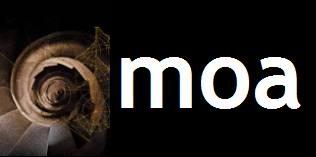MOA is the most popular open source framework for data stream mining, with a very active growing community (blog). It includes a collection of machine learning algorithms (classification, regression, clustering, outlier detection, concept drift detection and recommender systems) and tools for evaluation. Related to the WEKA project, MOA is also written in Java, while scaling to more demanding problems.
MOA performs BIG DATA stream mining in real time, and large scale machine learning. MOA can be extended with new mining algorithms, and new stream generators or evaluation measures. The goal is to provide a benchmark suite for the stream mining community.
The SMOTE-OB algorithm is in the moa/src/main/java/moa/classifiers/meta/imbalanced folder, while the streams used are in the Data Streams/ folder.
We run all the experiments on a virtual machine inside a Docker container to correctly extract the memory consumed by each model through InfluxDB. After launching the container, we created a .sh file to run all the experiments, where each line corresponding to a single model tested on a particular data stream. For example, the following line shows the first run of the SMOTE-OB model with ARF as base learner using the appearing-clustersincremental stream having imbalance ratio 1:9, and an incremental drift starting at the 45000˚ instance. The output of the results is then redirected to a folder. Each model, for each data stream and base learner, was tested 10 times with a different seed value.
docker run --rm --name="appearing-clusters_incremental_1_9_ARF_1" -v $(pwd)/results:/src/results test_moa bash -c "java -Xmx15g -Xss50M -cp moa.jar -javaagent:sizeofag-1.0.4.jar moa.DoTask \"EvaluatePrequential -l (meta.imbalanced.SMOTEOB -s 10 -d -e 1) -s (ArffFileStream -f (Data Streams/Artificial/appearing-clusters/1/appearing-clustersincremental.arff)) -e (WindowFixedClassificationPerformanceEvaluator -w 45000 -j 10000 -r -f -g) -i -1 -f 5000\" 1> results/appearing-clusters/incremental_1_9/ARF/1_results.csv 2> results/appearing-clusters/incremental_1_9/ARF/1_running.csv"
Once completed, we downloaded them together with the respective memory consumed. To download the latter, we run the following query in InfluxDB for each model and stream tested. The following query downloads the average memory consumed by the model previously tested on 10 runs.
from(bucket: "bucket_name")
|> range(start: v.timeRangeStart, stop: v.timeRangeStop)
|> filter(fn: (r) => r._measurement == "docker_container_mem")
|> filter(fn: (r) => r._field == "usage")
|> filter(fn: (r) => r.container_name == "appearing-clusters_incremental_1_9_ARF_1" or r.container_name == "appearing-clusters_incremental_1_9_ARF_10" or r.container_name == "appearing-clusters_incremental_1_9_ARF_2" or r.container_name == "appearing-clusters_incremental_1_9_ARF_3" or r.container_name == "appearing-clusters_incremental_1_9_ARF_4" or r.container_name == "appearing-clusters_incremental_1_9_ARF_5" or r.container_name == "appearing-clusters_incremental_1_9_ARF_6" or r.container_name == "appearing-clusters_incremental_1_9_ARF_7" or r.container_name == "appearing-clusters_incremental_1_9_ARF_8" or r.container_name == "appearing-clusters_incremental_1_9_ARF_9")
|> aggregateWindow(every: v.windowPeriod, fn: last)
|> last()
|> group(columns: ["_usage"])
|> mean()
|> yield(name: "appearing-clusters_incremental_1_9_ARF")
Finally, we averaged the results over the 10 repetitions of all the models tested, and we used those results to apply the Nemeyi test.
If you want to refer to SMOTE-OB in a publication, please cite the following paper:
Bernardo, Alessio, and Emanuele Della Valle. "SMOTE-OB: Combining SMOTE and Online Bagging for Continuous Rebalancing of Evolving Data Streams." 2021 IEEE International Conference on Big Data (Big Data). IEEE, 2021. DOI: 10.1109/BigData52589.2021.9671609, https://ieeexplore.ieee.org/iel7/9671263/9671273/09671609.pdf



